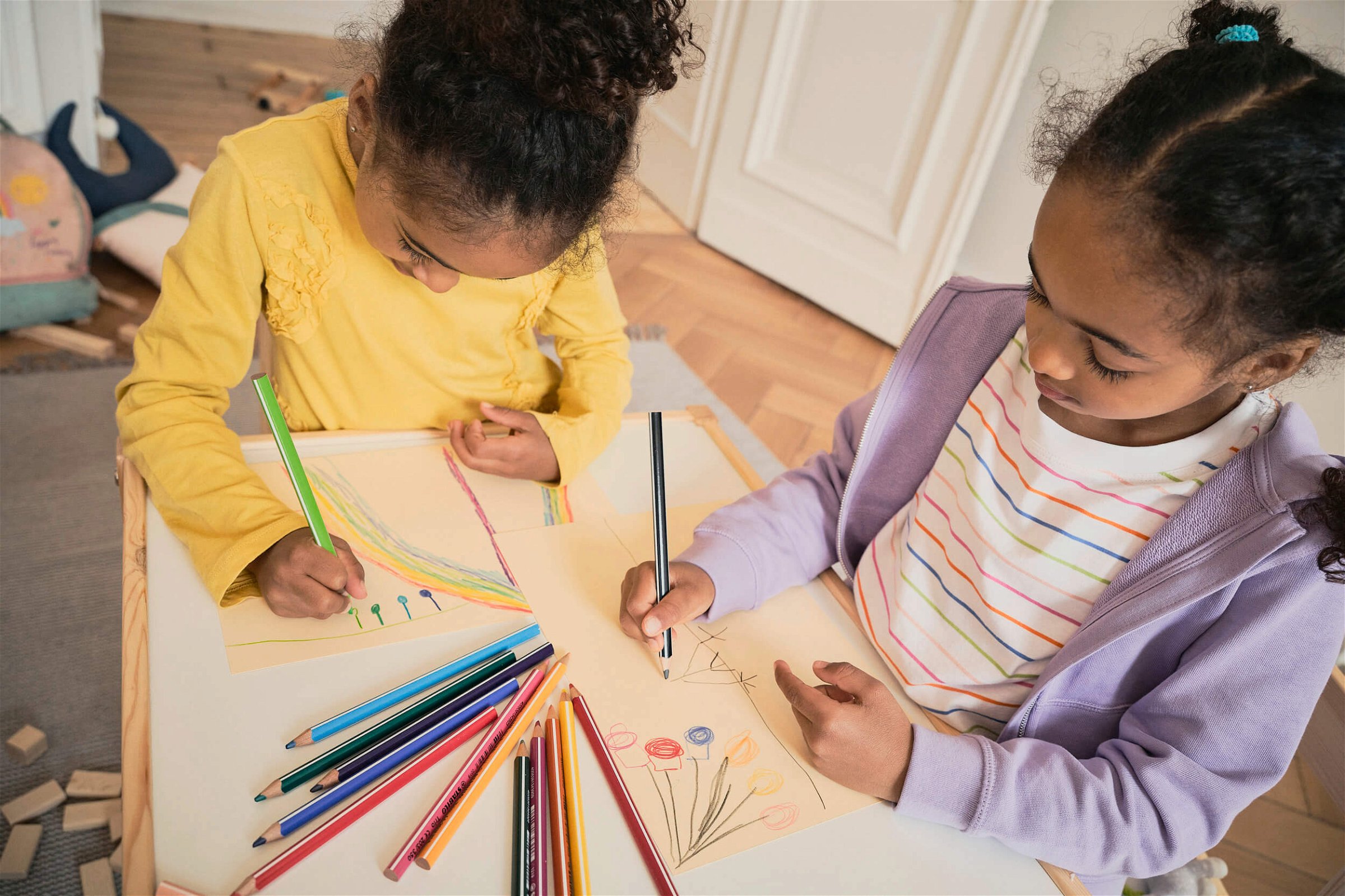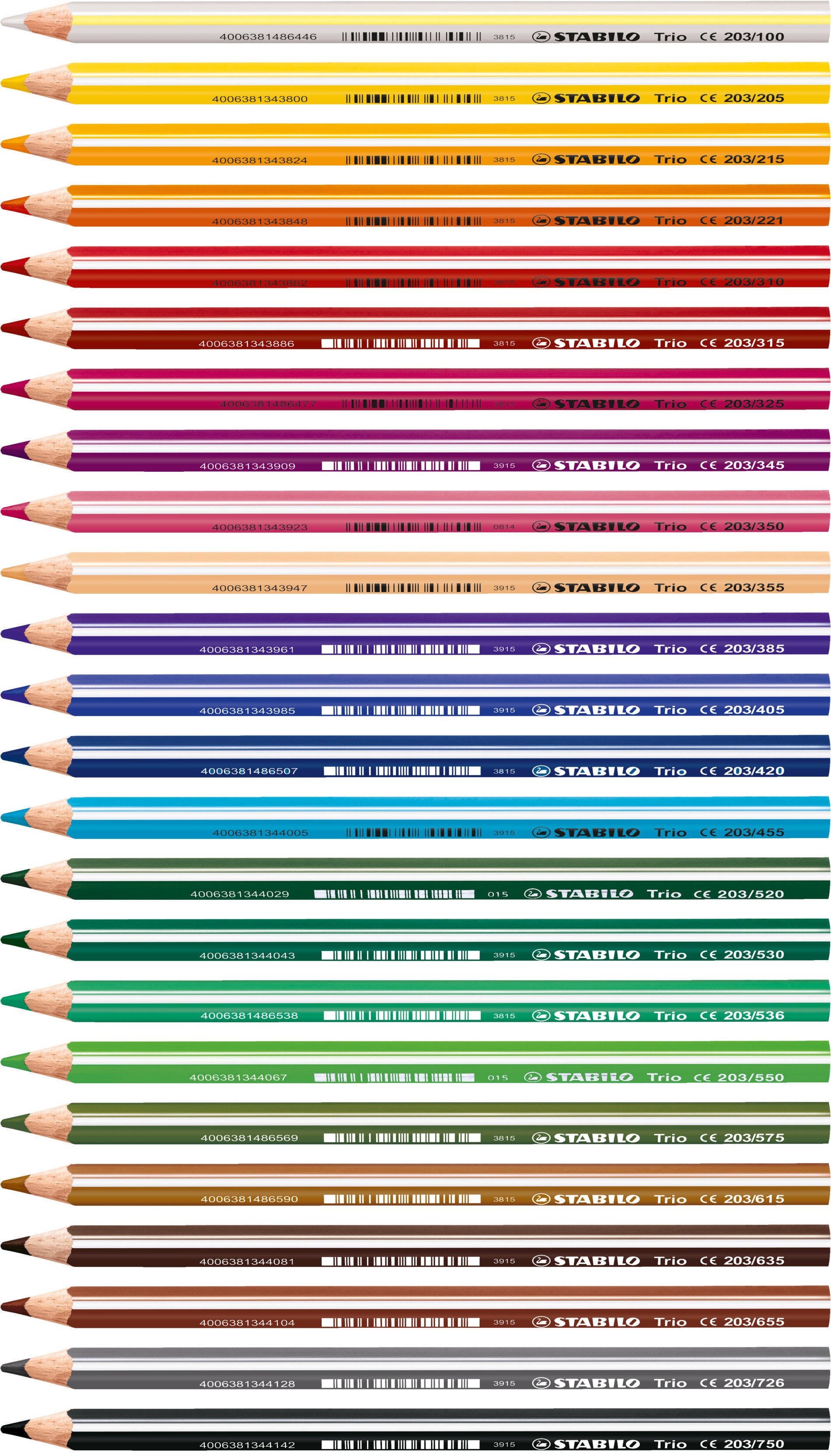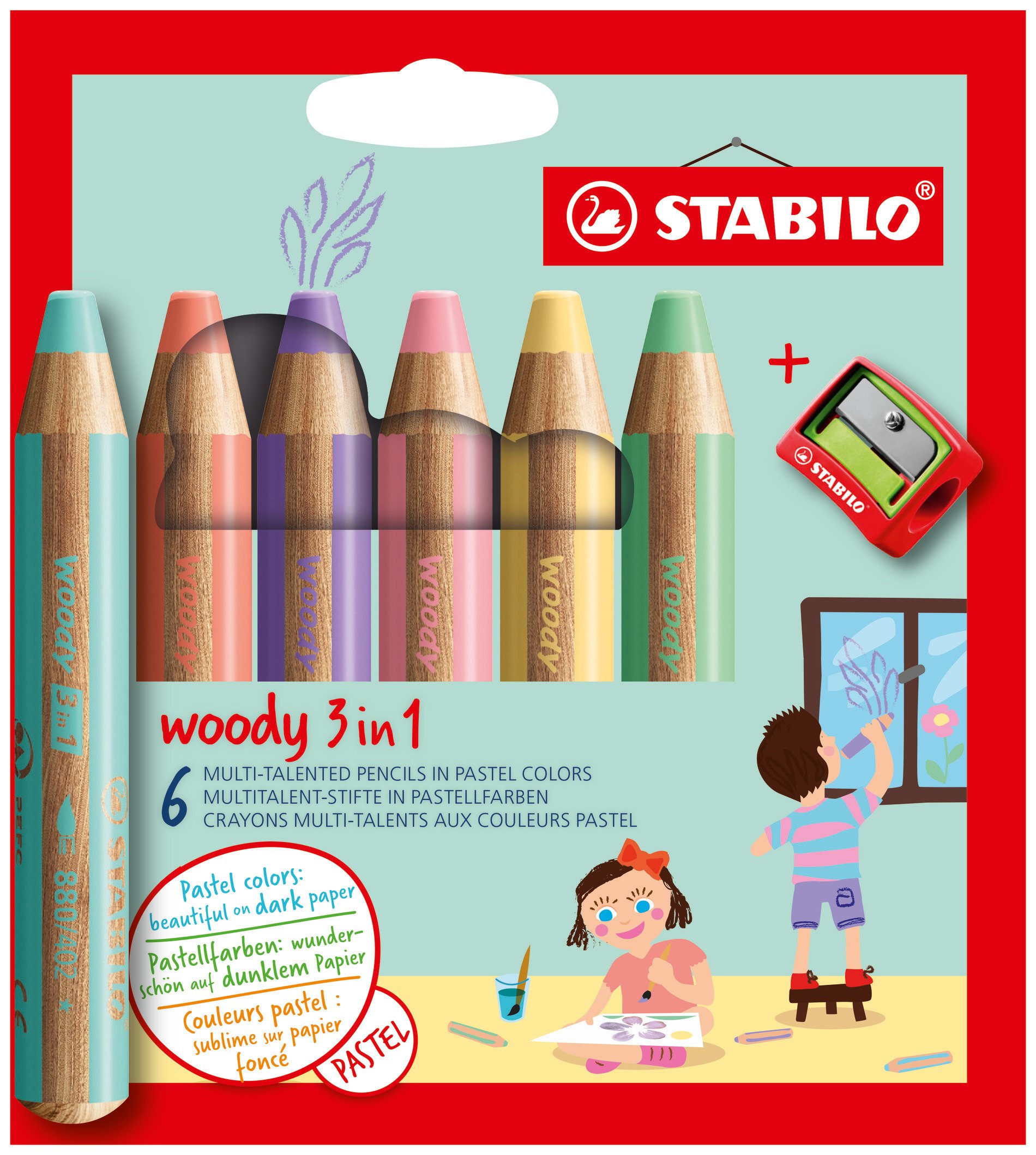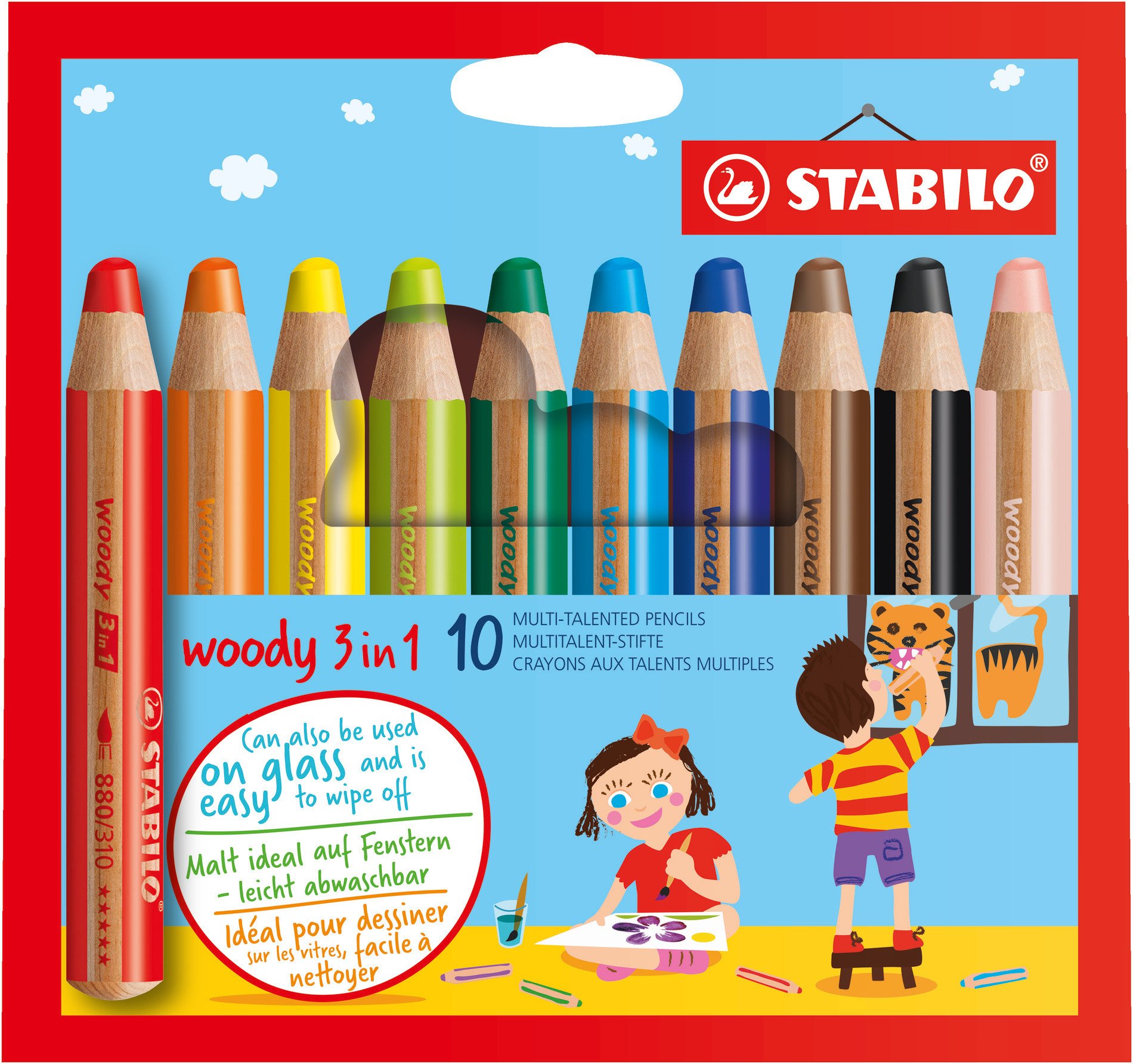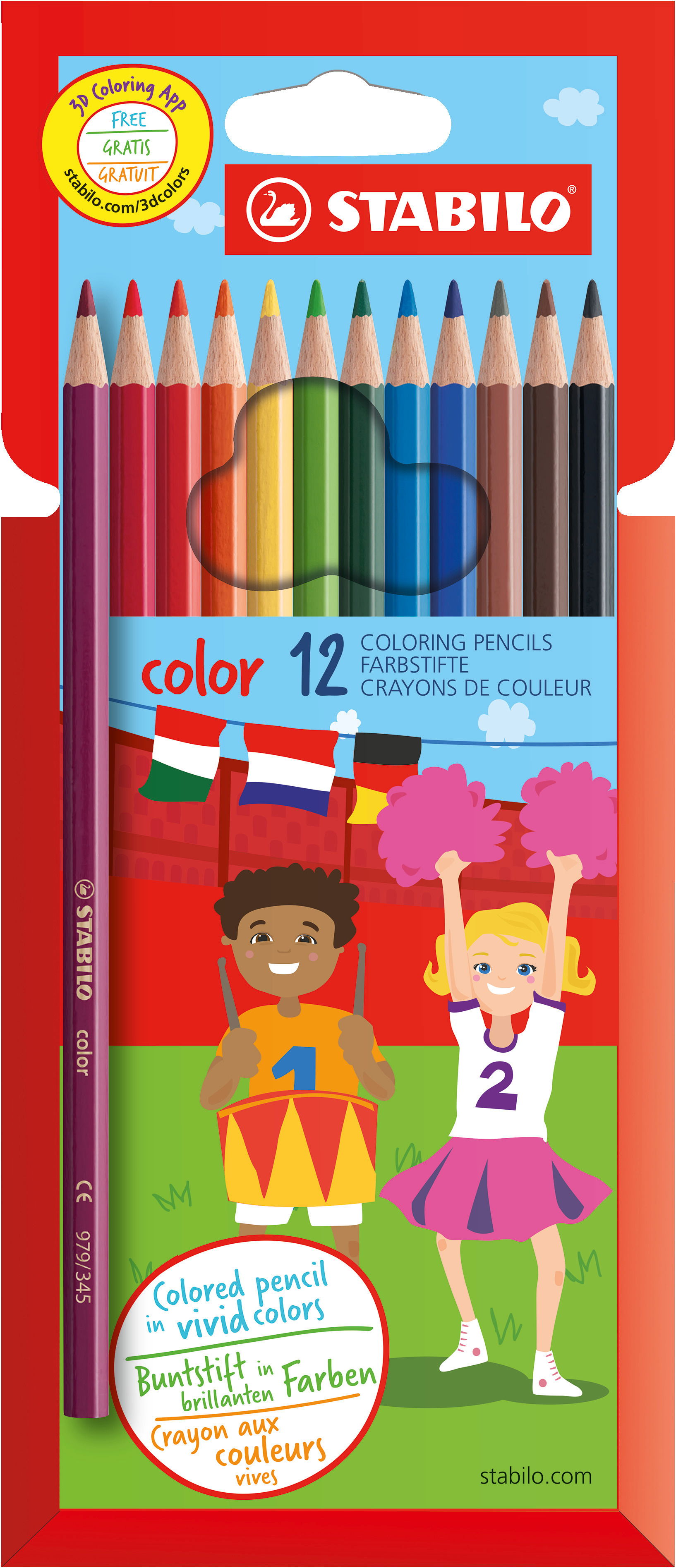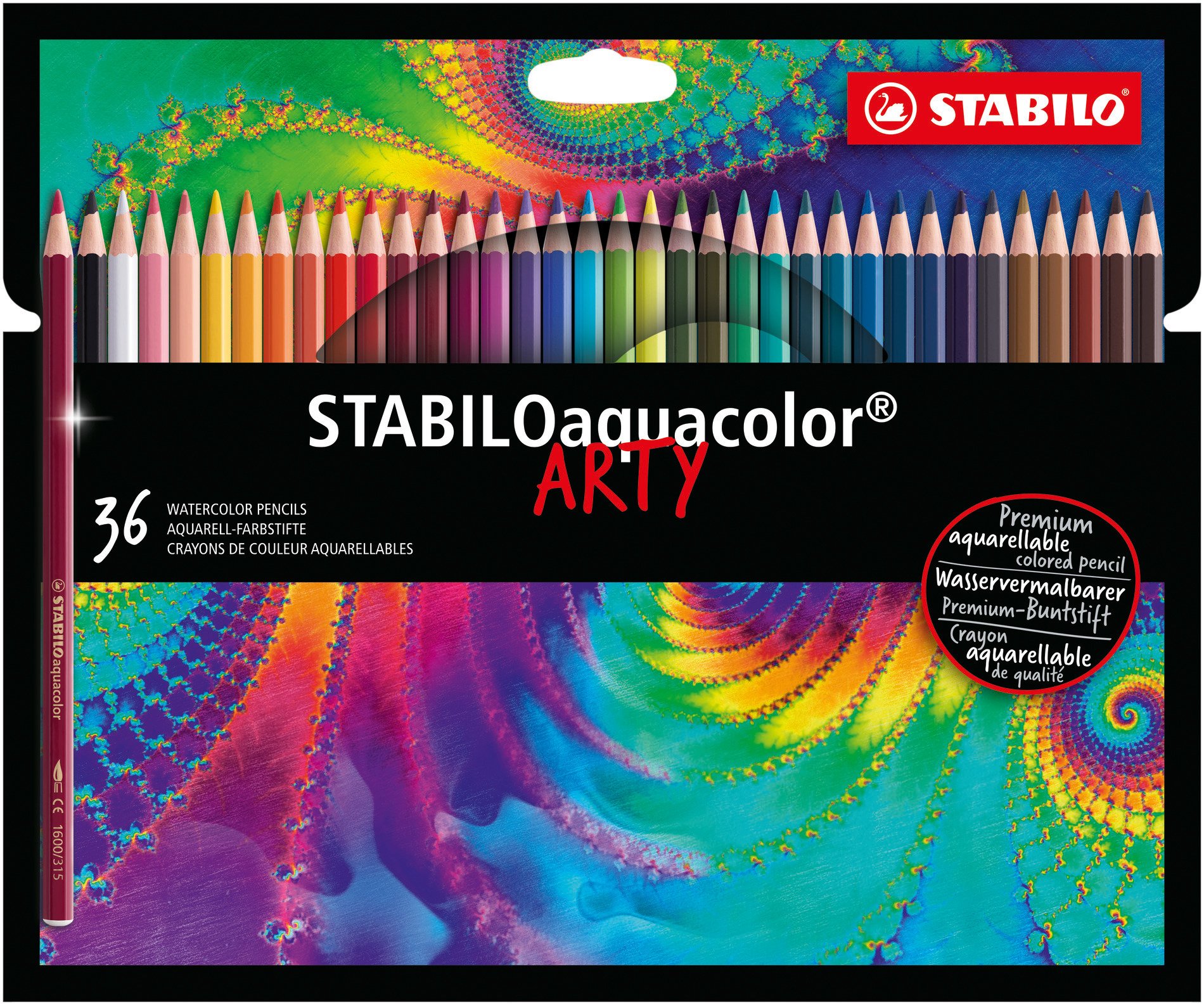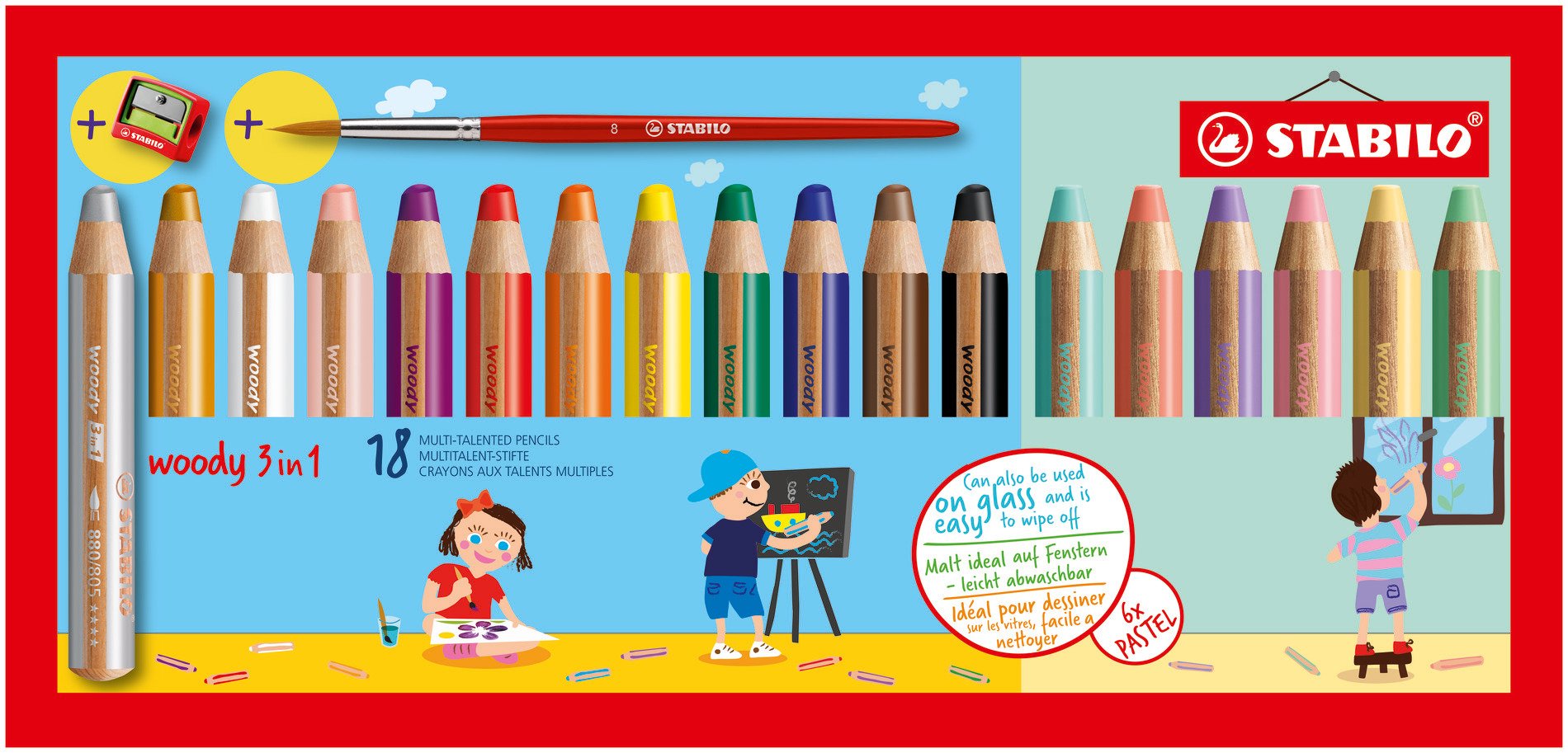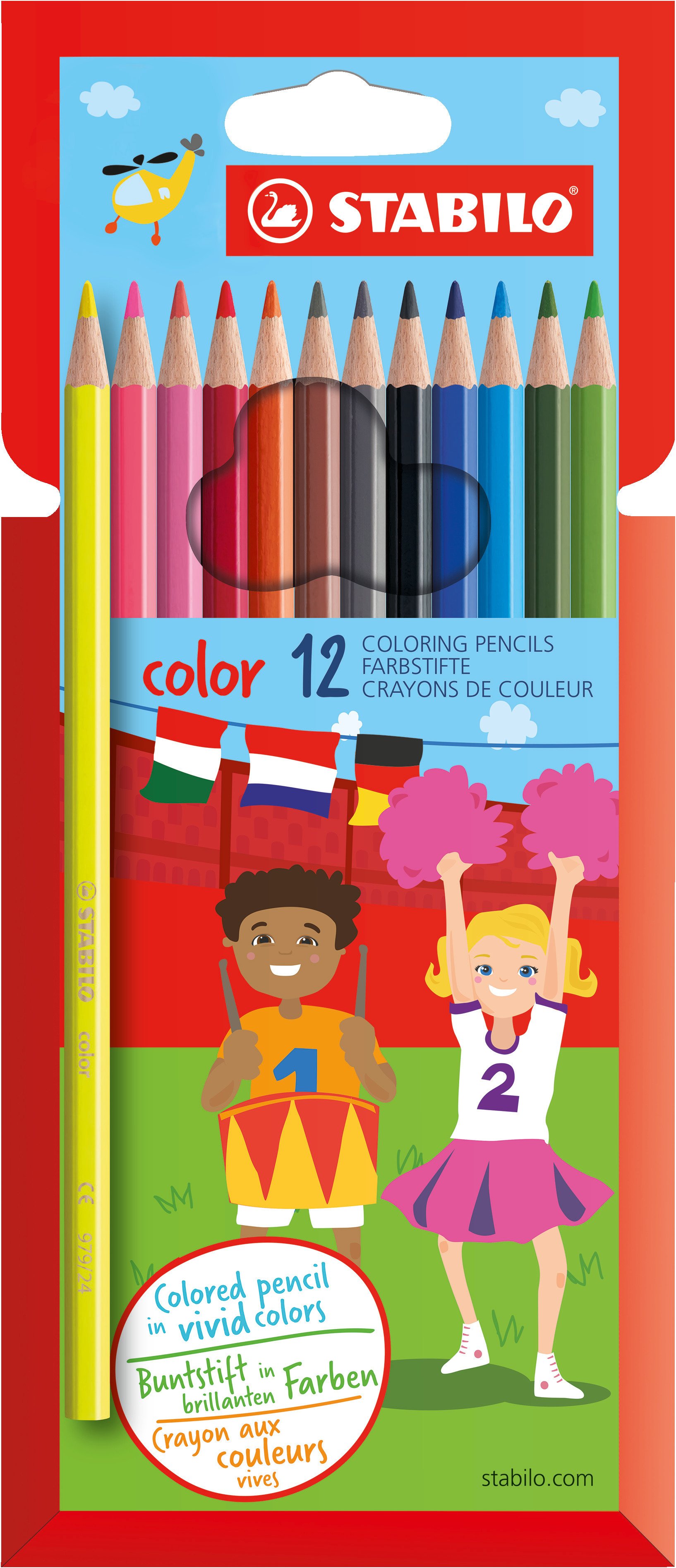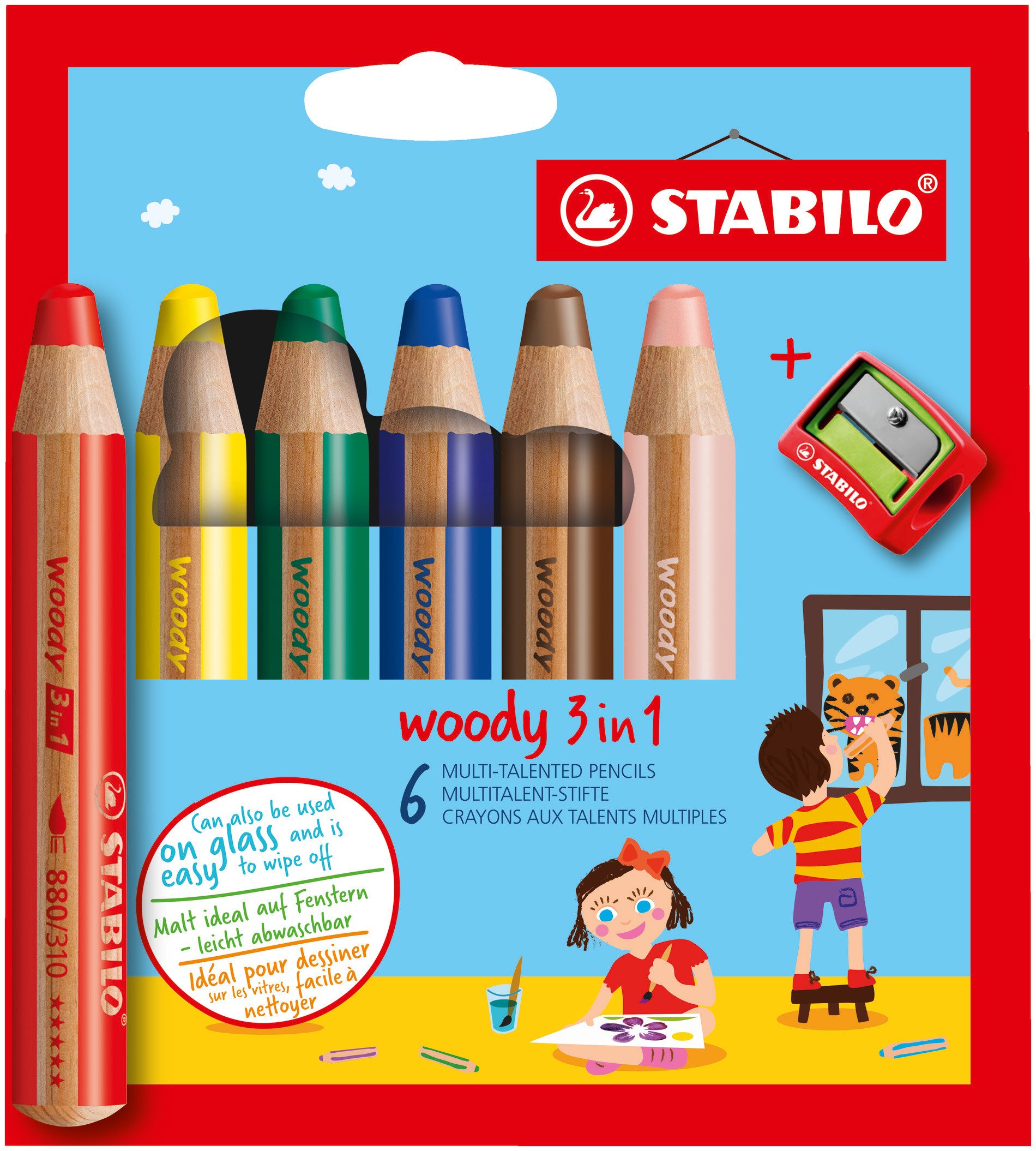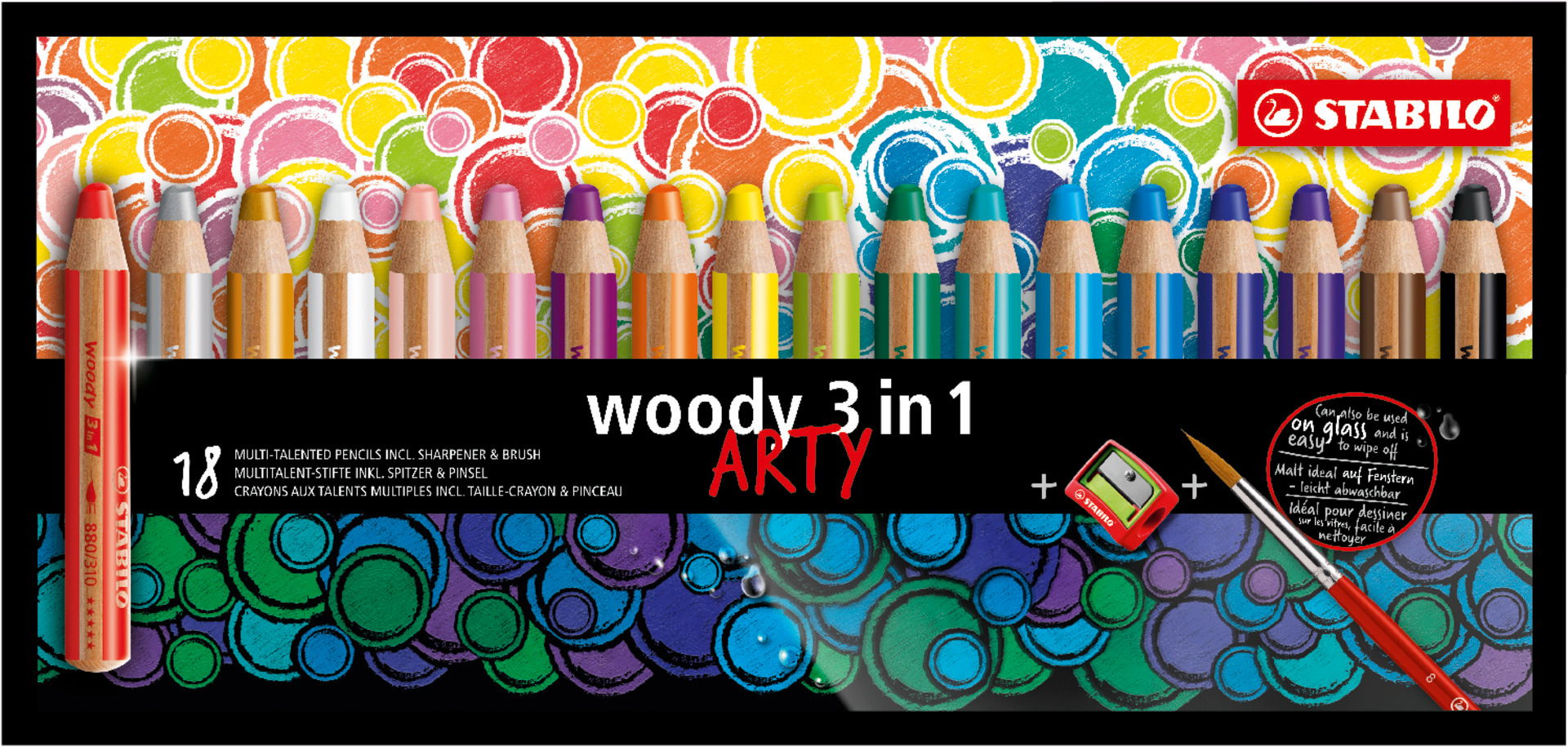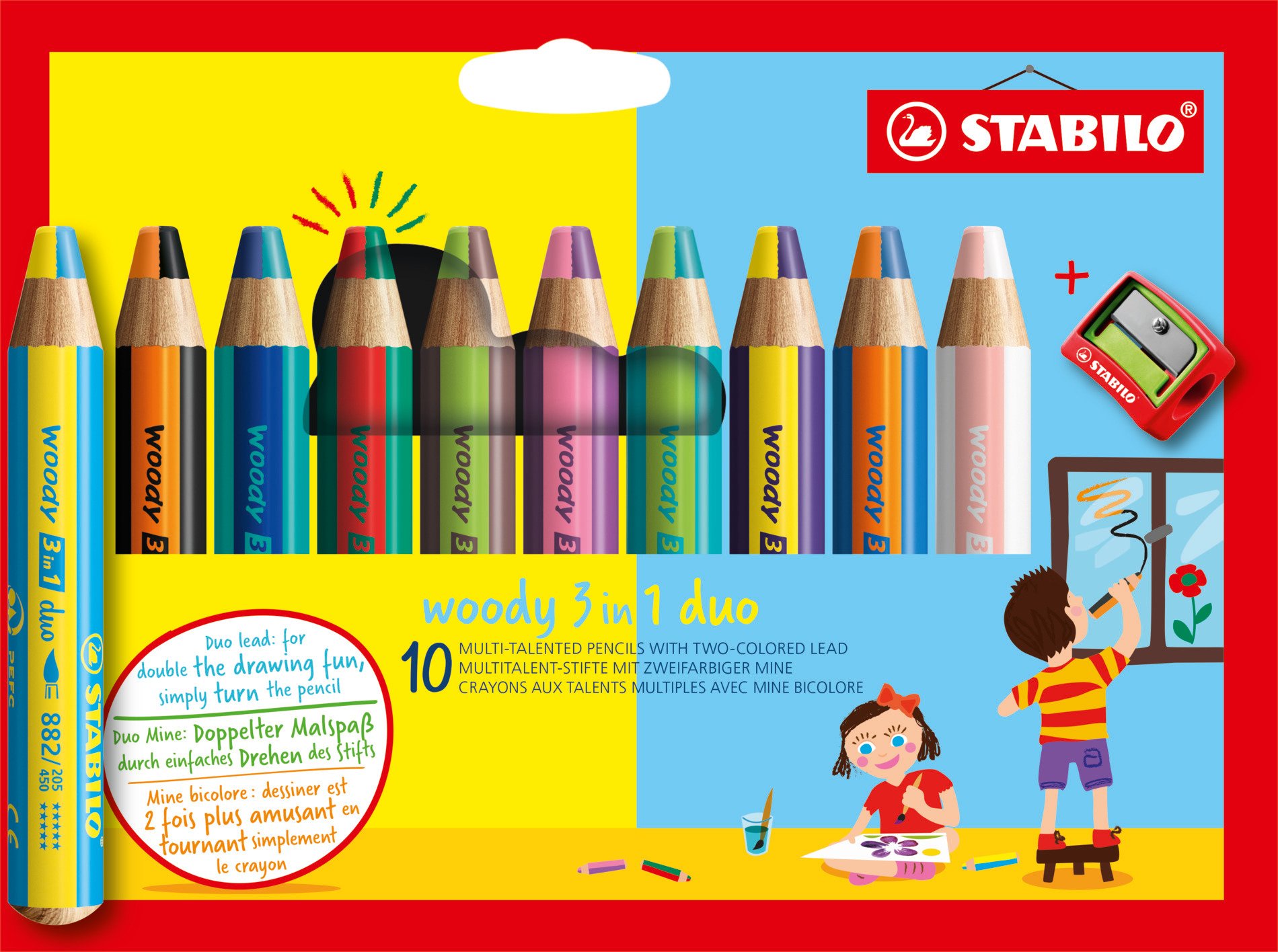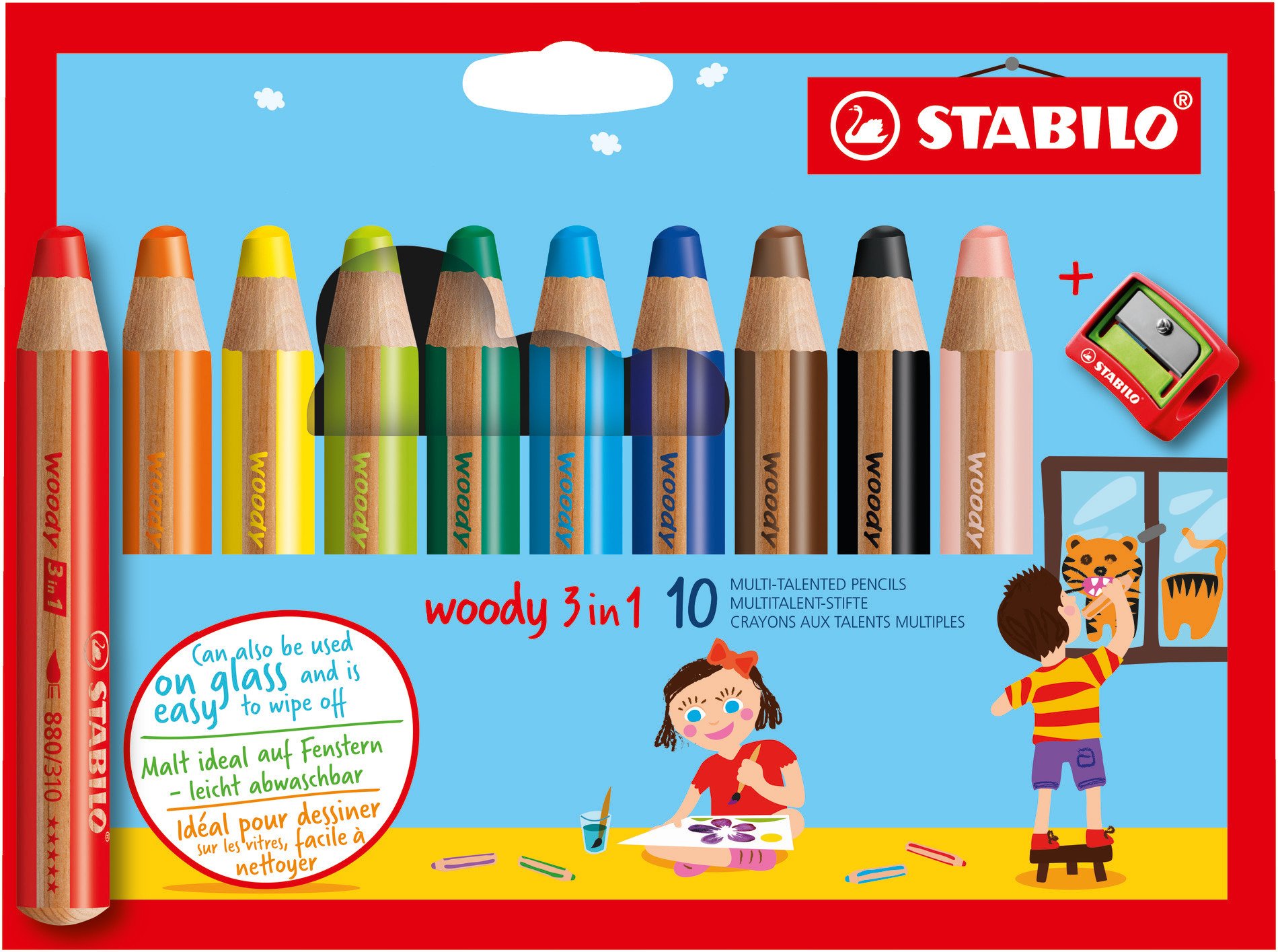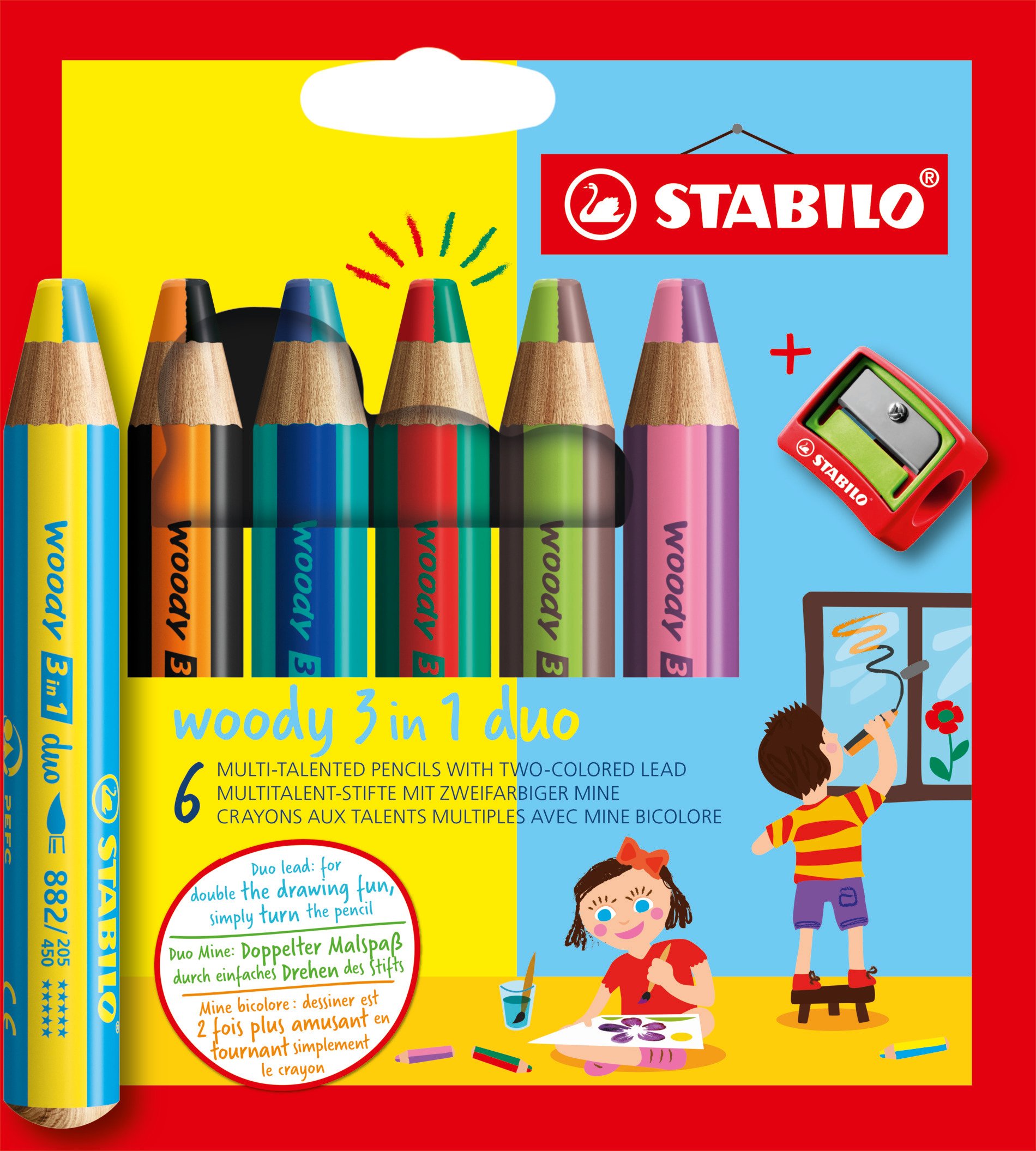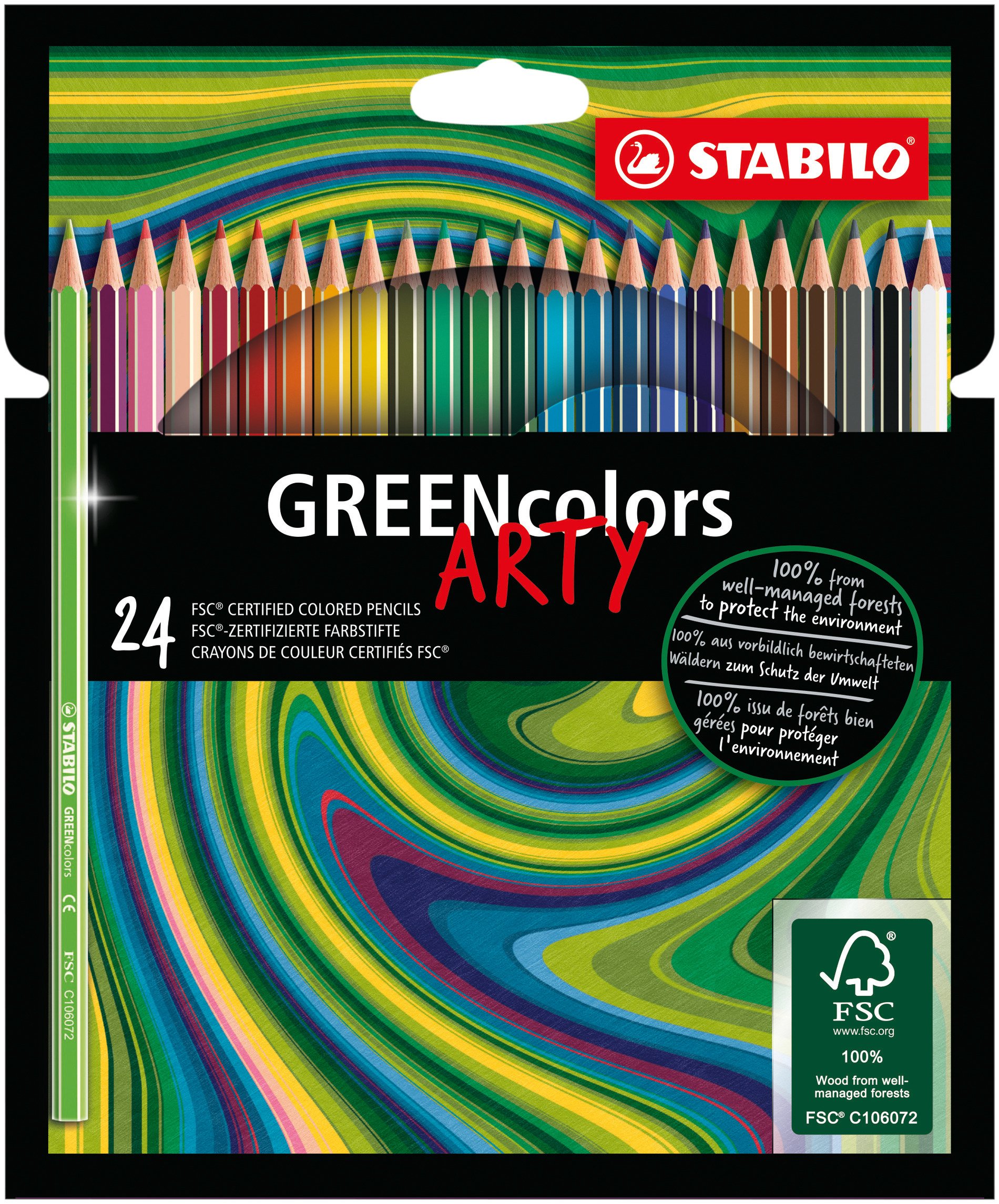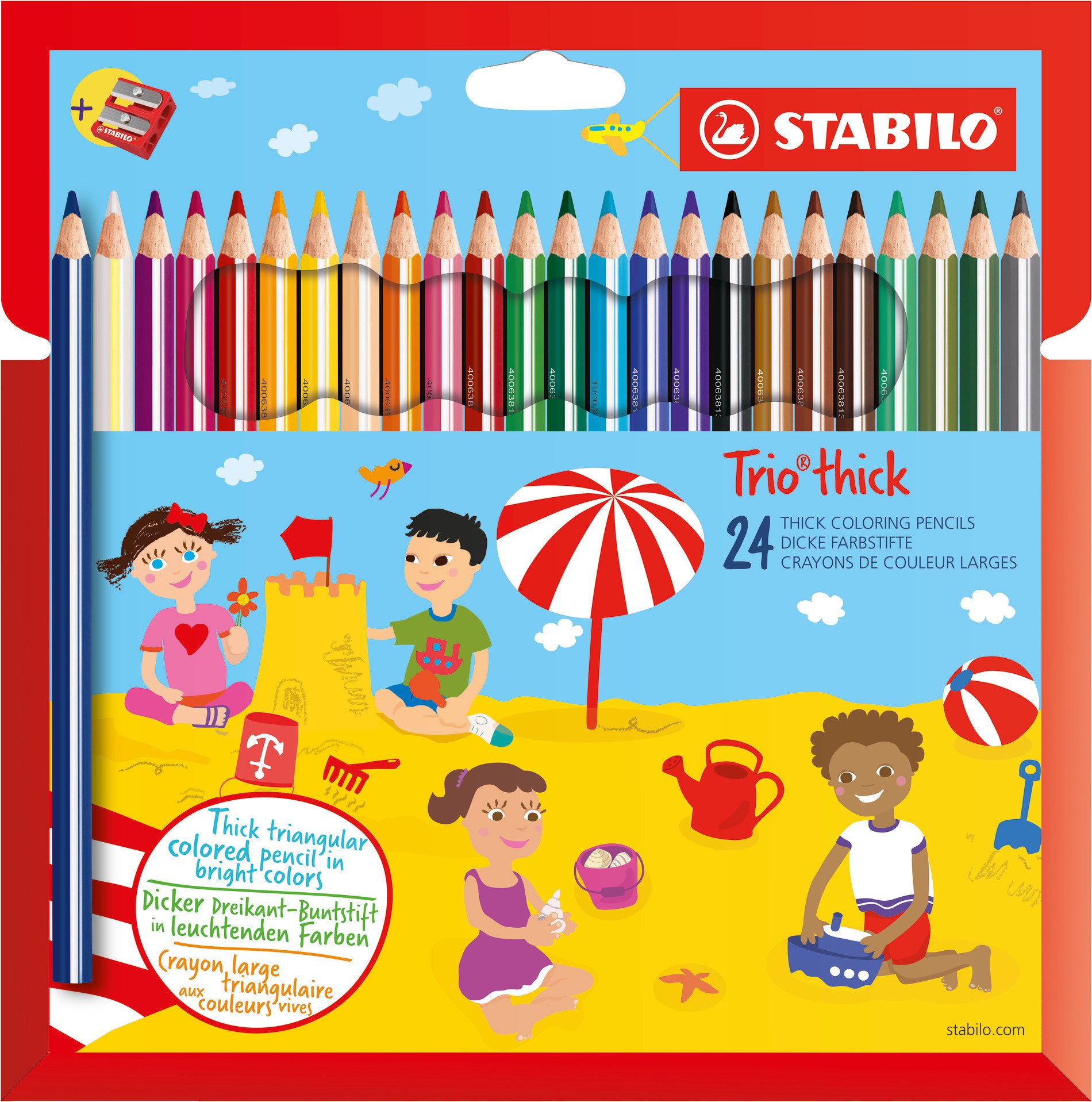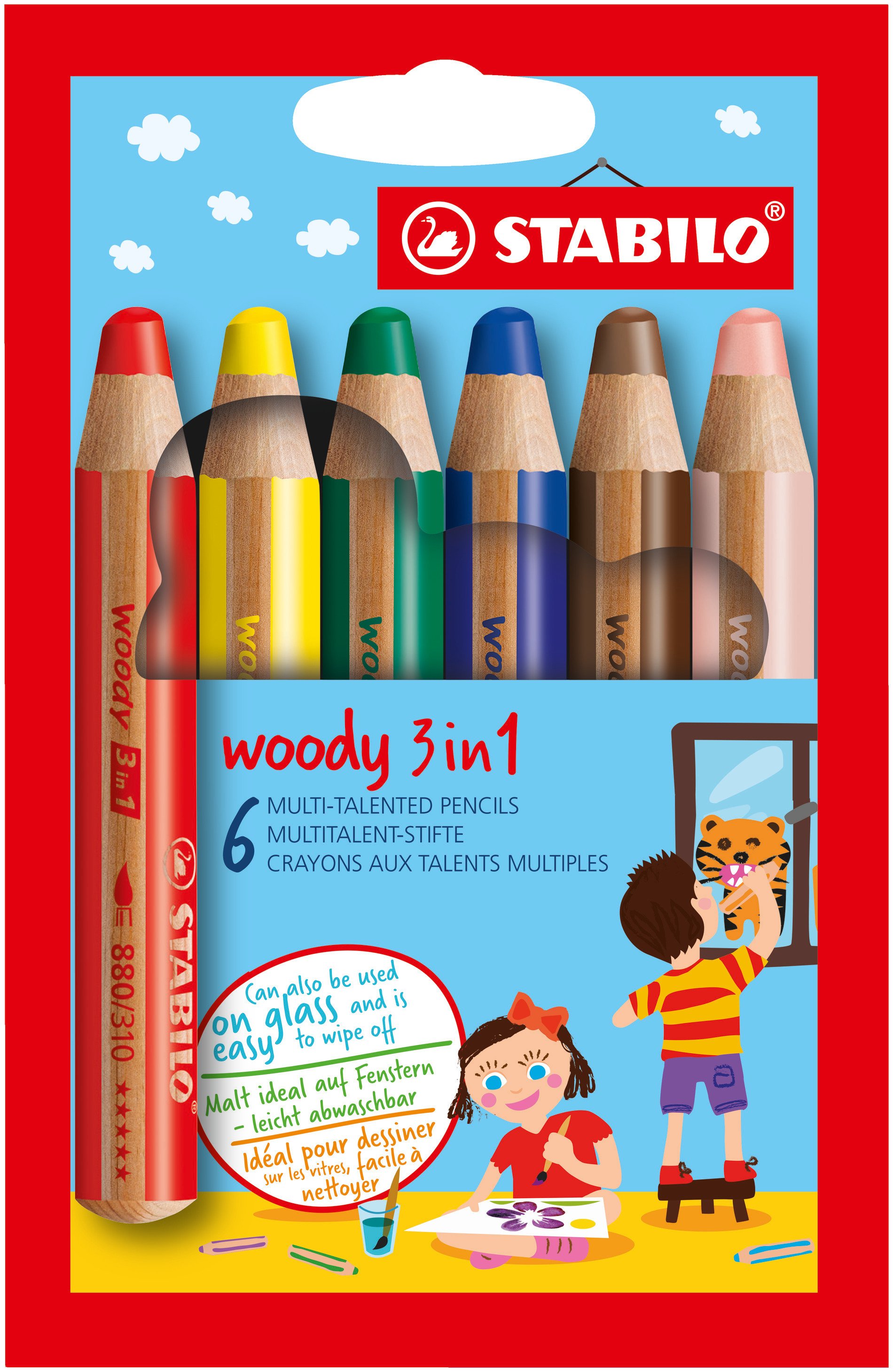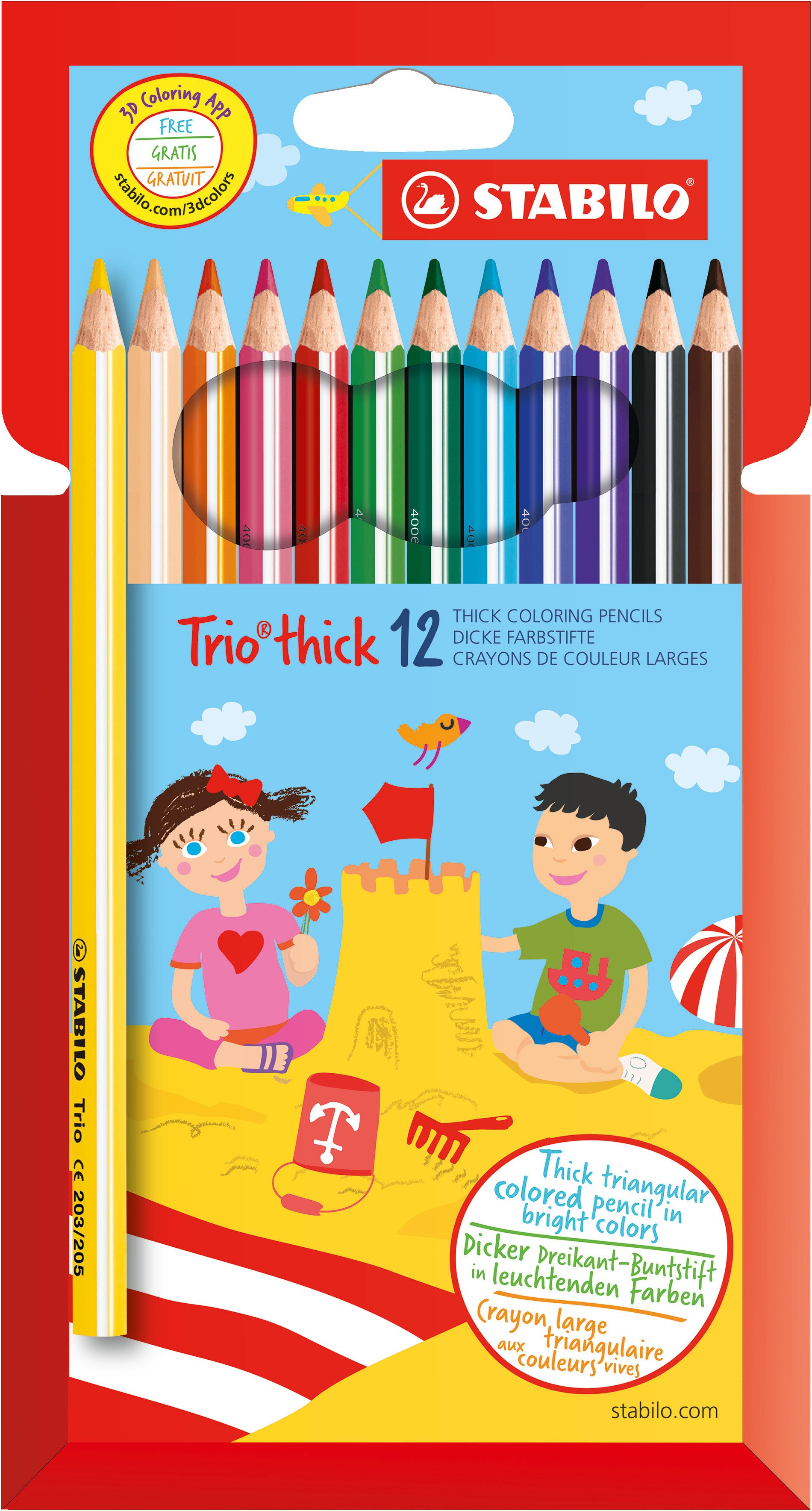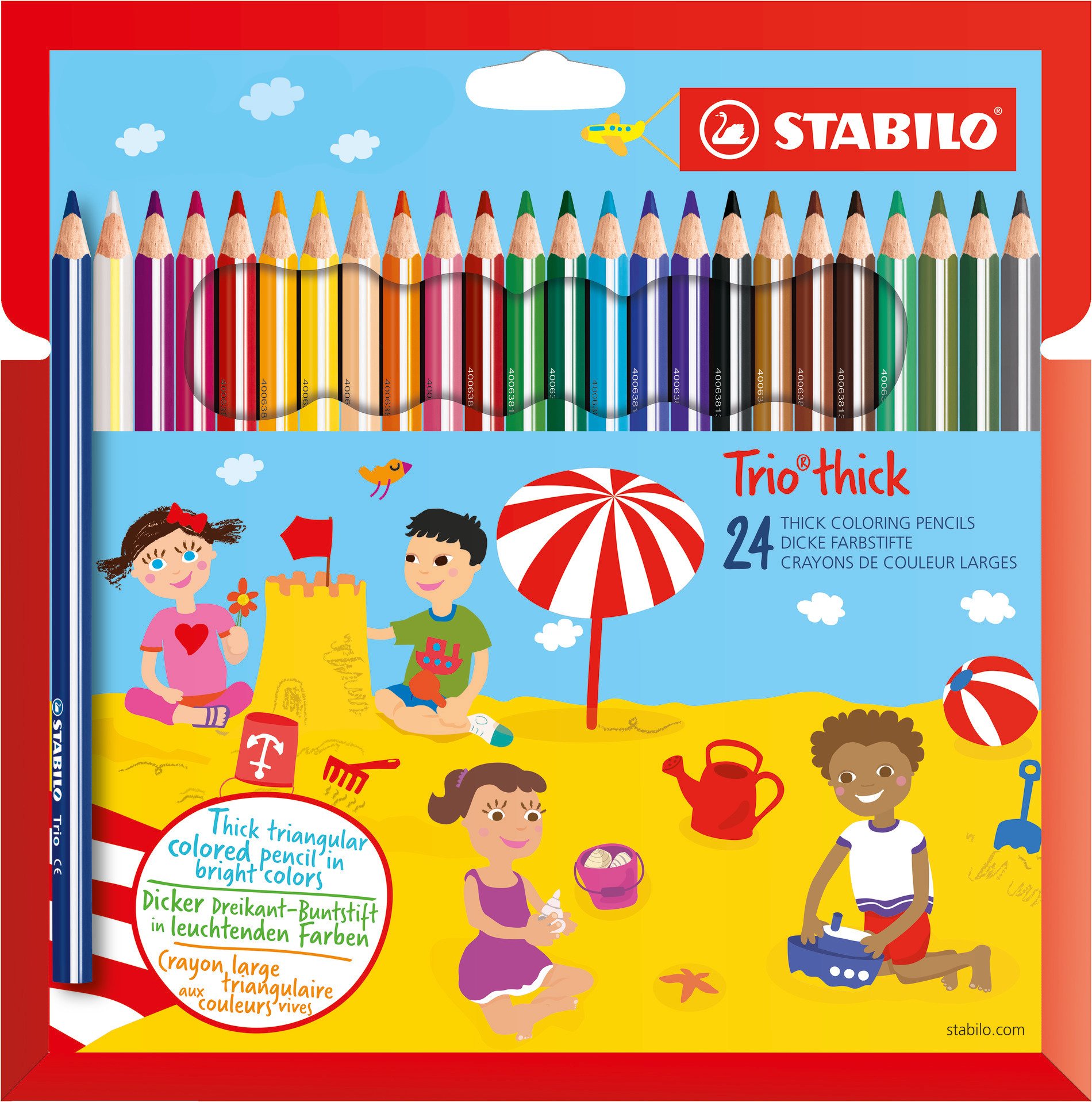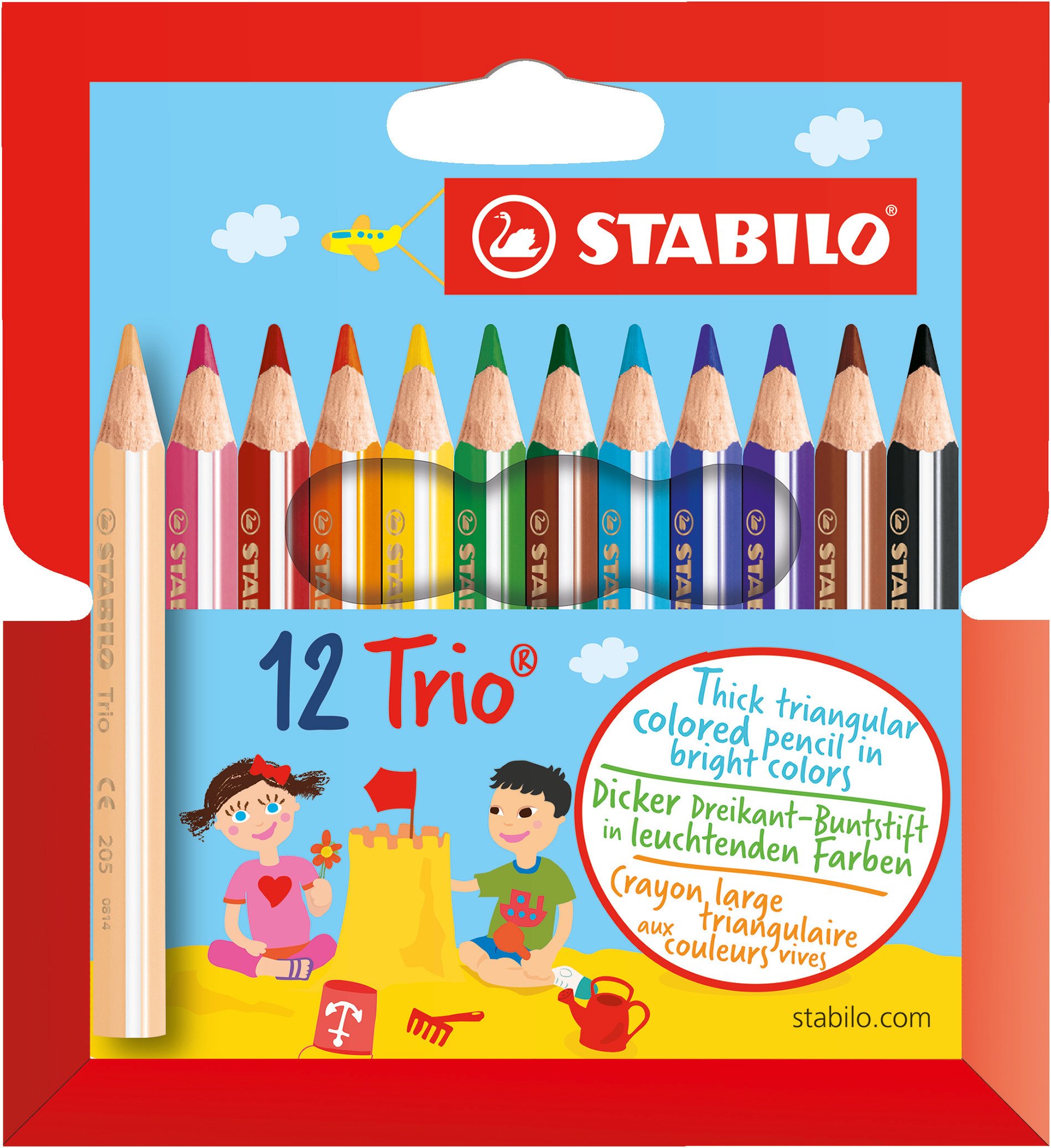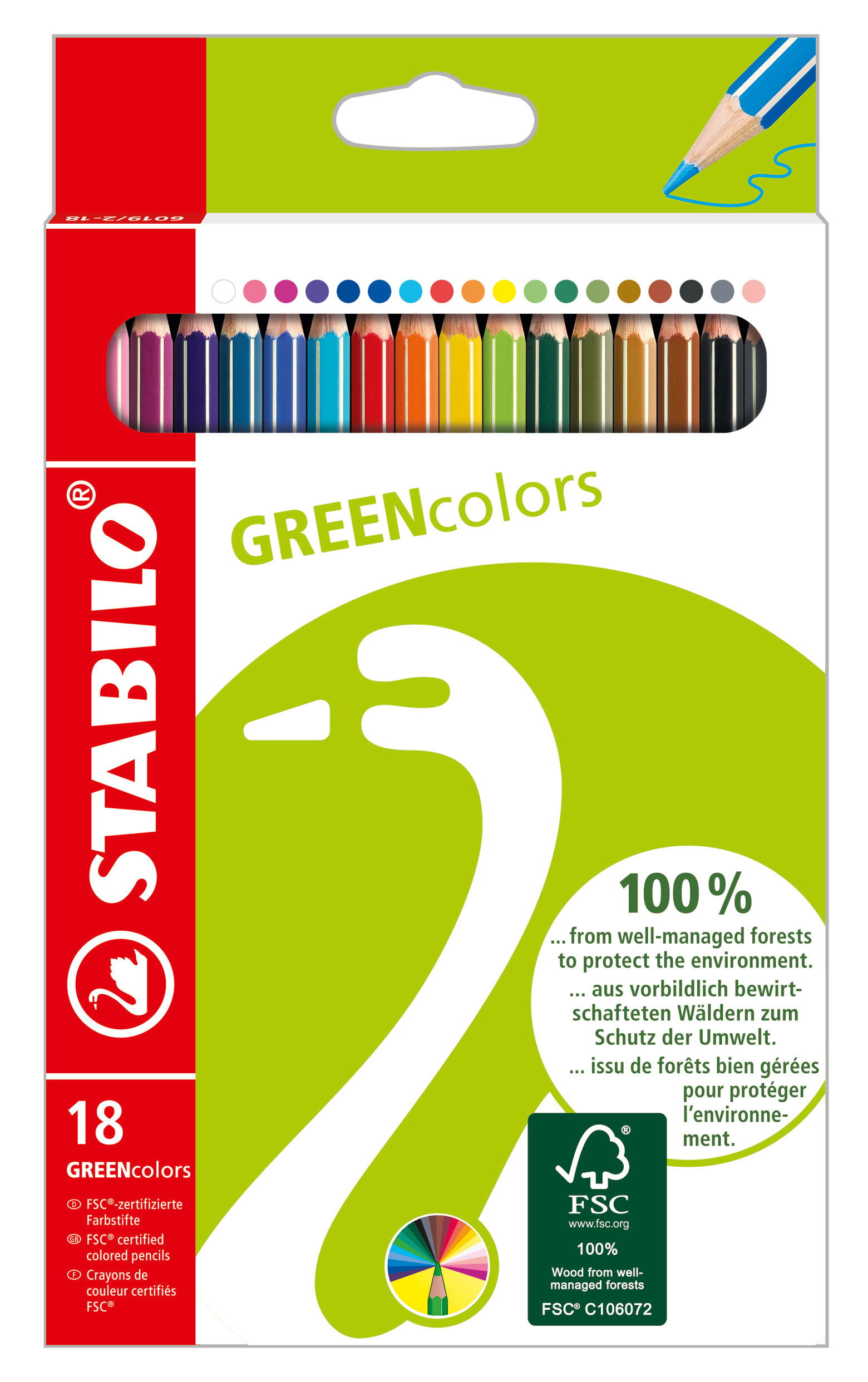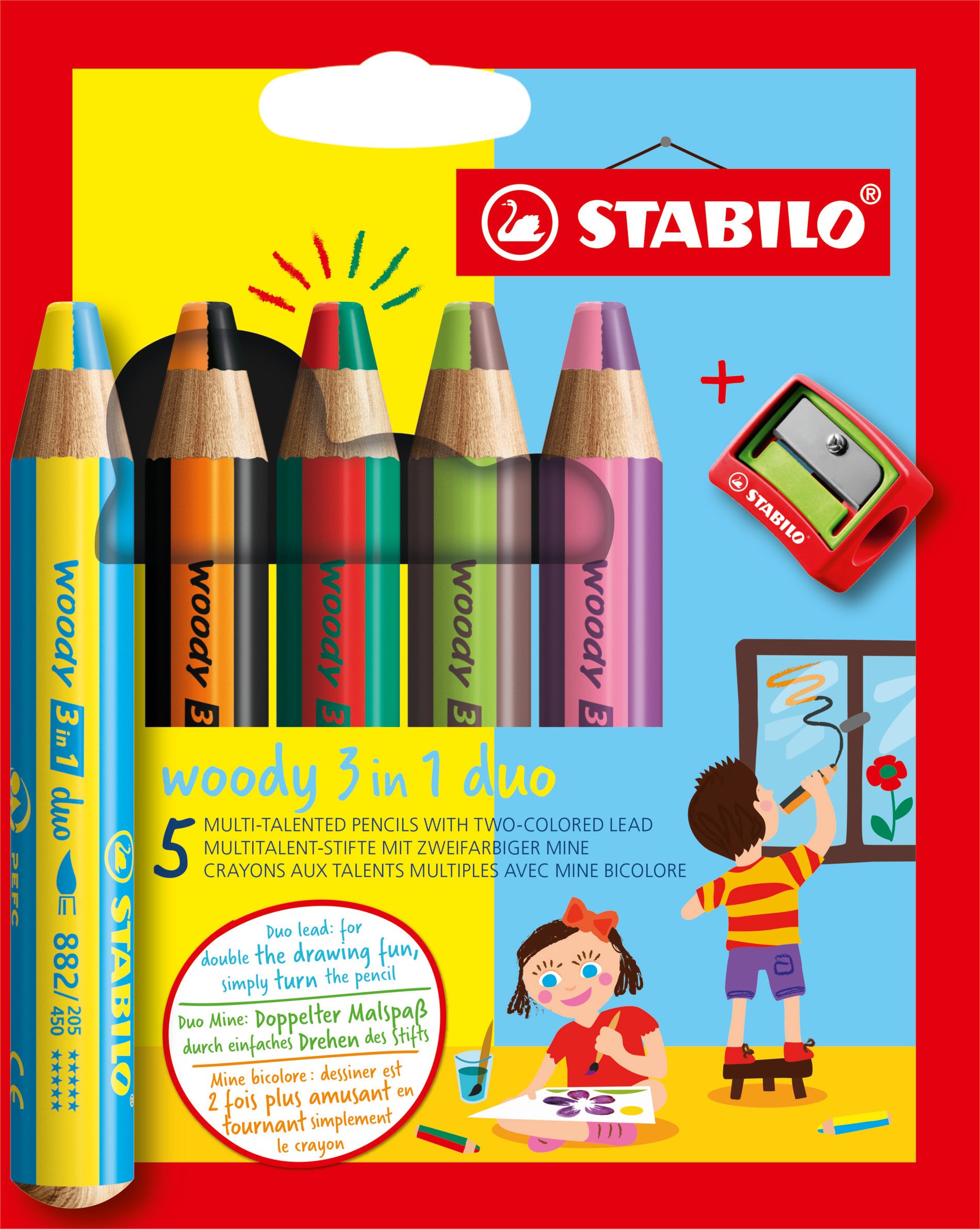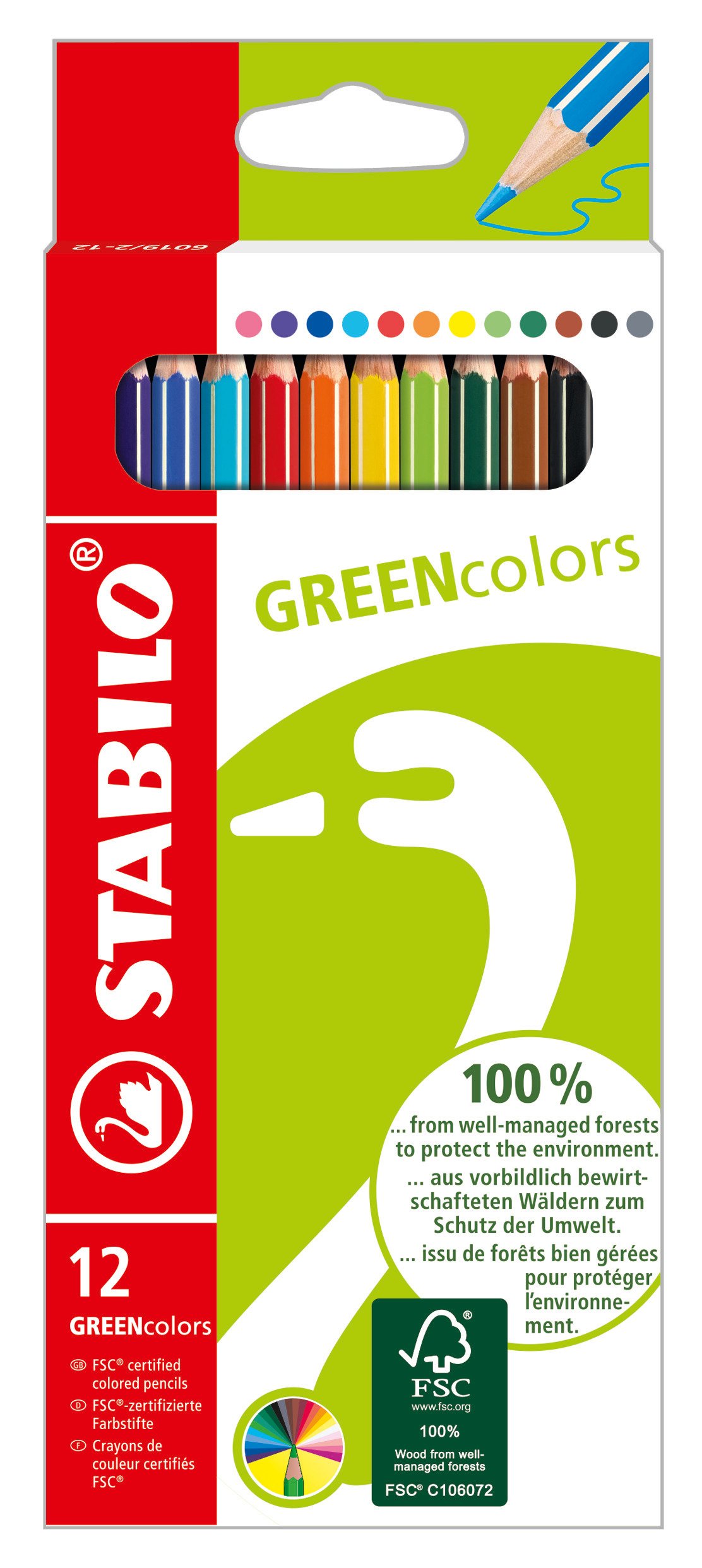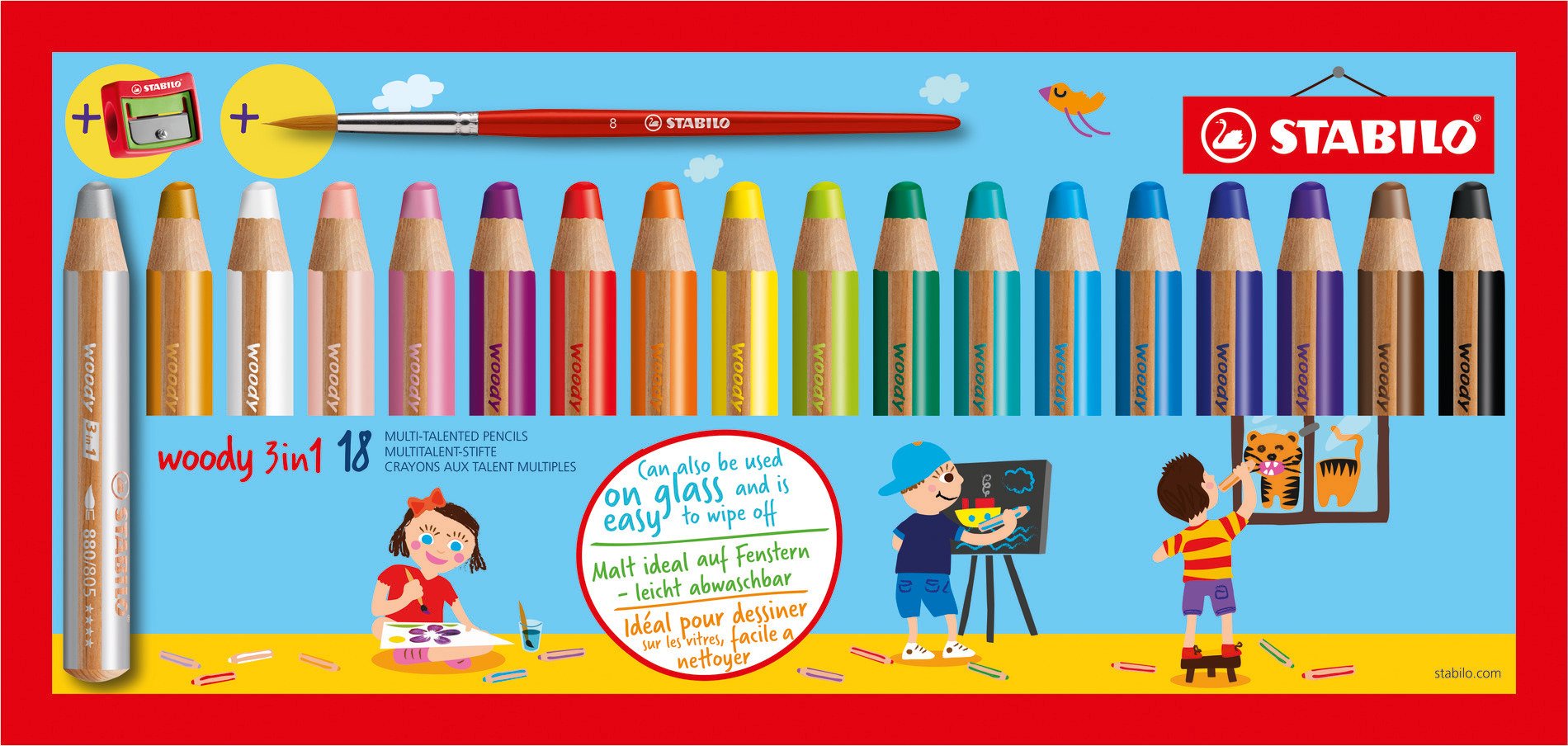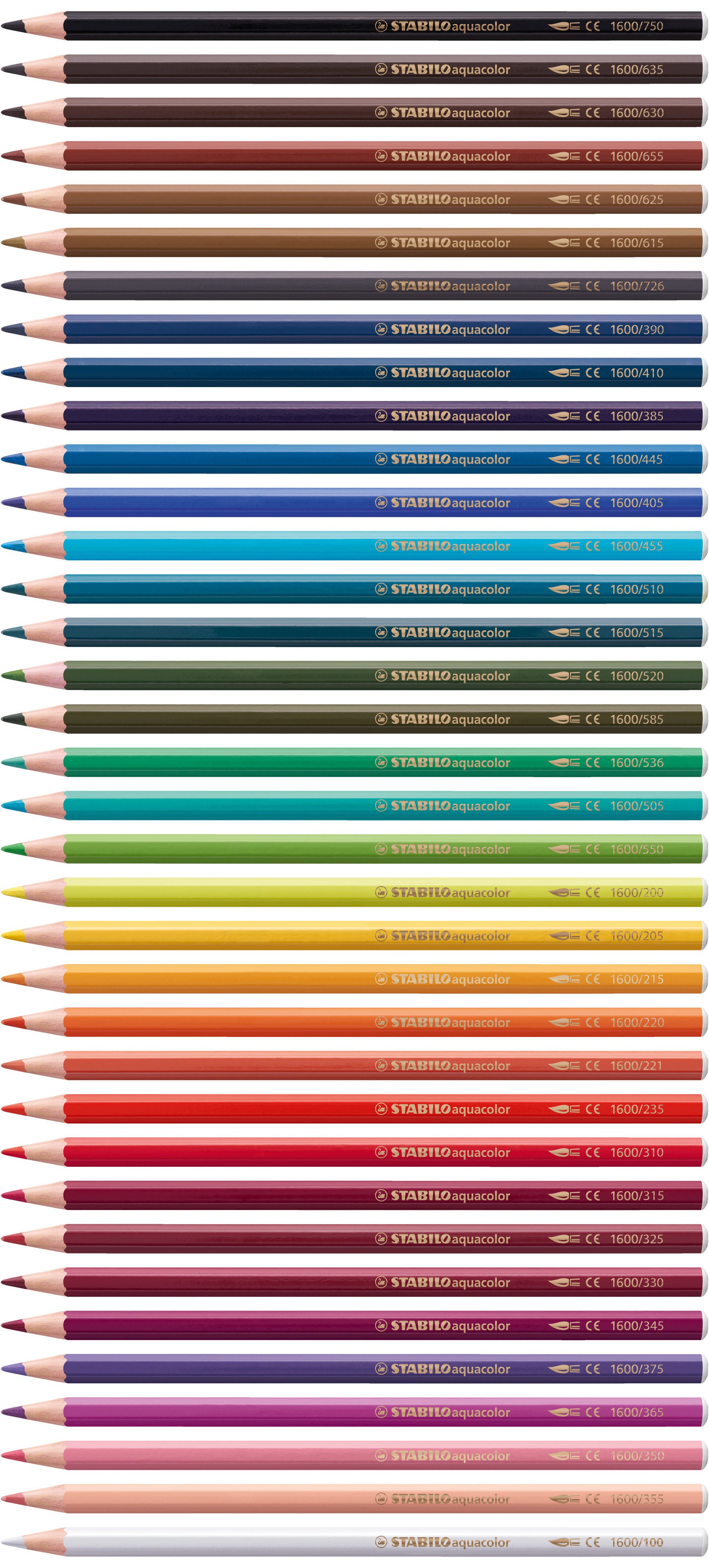How are colored pencils made?
Colored pencils are one of the oldest writing instrument technologies and have been manufactured according to the same principle for decades. In this process, grooves are milled in wooden plates to the thickness of the leads, the colored pencil leads are then placed in the grooves, and then a second wooden plate with the same milling and adhesive is placed on top of the leads. This process is known in the trade as "marrying". The plates are then separated from each other along the leads, then sanded and varnished - and the pencil is finished.
What are colored pencils used for?
Colored pencils are made with leads and shafts of different thicknesses, ranging in shape from round to triangular to hexagonal. They are therefore suitable for young children as well as amateur and professional artists of different ages to give free rein to their creativity.
Which colored pencil is suitable for whom?
As with graphite pencils, colored pencils should be thicker and rounder the younger the user and the weaker their motor skills. With increasing age or motor skills, the pencils can then initially become triangular and thinner. For adults, hexagonal crayons are suitable.
For whom do colored pencils with grip zones make sense?
From the age of 3 to 4, non-slip grip zones in special versions for left- and right-handers, such as STABILO EASYcolors colored pencils, can help children learn the correct position for their fingers in a three-point grip while they are still drawing. You can find these colored pencils in our learning to write products.

